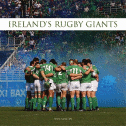 |

|
|||
|
Ireland's Rugby Giants: Mick MolloyMick Molloy remains a familiar and popular figure around rugby grounds in Ireland and beyond, even though he stopped playing for his country in 1973. His final game was against France where he was partnered by Willie John McBride. Theirs had been one of the most enduring pairings in international rugby, beginning and ending against Les Bleus. They lined out together in the second row on twenty-six occasions.It began after Mick succeeded the great Bill Mulcahy. A hard act to follow, granted, although Willie John reckoned the Galway-born doctor did rather well. “He was one of the best partners I had in my time with the Irish side,” revealed the Lions’ legend. “But then there wasn’t a lot Molloy didn’t do on the field for his team.” These days Mick would probably be labelled an ‘unsung hero’. As various members of the Ireland teams he played in have said over the years, a lot of his best work went unseen. He was the master of nipping in for what looked like a casual pick-up. He could winkle the ball away from the opposition, or get it off the ground when an opponent seemed favourite. Another of his assets came in the engine-room of the scrum. His sheer strength, tenacity and willingness to put himself about in the line-outs made him a real players’ player. He cites the win over the Australians in 1967 as the highlight of his career. The game was in Dublin and Ireland had what W.J. McBride described as “a rousing 15-8 win,” Michael Gibson contributing two drop goals on the day. To further his medical career Mick moved to England where he was welcomed with open arms by London Irish. The Exiles were enjoying a good spell in the early Seventies and Molloy was very much part of that. But when the opportunity arose to return to work and live in Ireland it was quickly snapped up. Mick went on to become the Ireland team doctor, a post he held for many years. Then in 2005 the IRB appointed him as its first medical officer. In the changing environment of the professional game there were, and continue to be, grave concerns about the demands being made on players. “It is a challenging and important role,” he said shortly after his appointment. “Best practice medicine is critical to the well-being of all players.” The general feeling at IRB level is that the game has increasingly become one of attrition. Players are being asked to play more or less constantly from August to the following May. The number of big hits some are taking over a season seem unhealthy and too frequent. Recovery time is often not being managed properly. The future of the game is being sacrificed at the altar of short-term expediency. Admittedly there have been huge advances in recent years, both in the appliance and sophistication of sports medicine. The use of conditioning coaches, physiotherapists, dieticians and the like has also helped. But the issue of the number of games needs to be addressed sooner rather than later. Molloy realises there is a big job to be done. Mindsets need to change and the philosophy of ‘more is better’ needs to be kicked firmly into touch. “Aside from the key issues of health and safety of players, there is undoubtedly a strong sense of concern for the future direction of the game,” admitted Molloy. “We are always looking for the next generation of players and it essential to ensure the game remains appealing to young people.” One of the underlying problems, of course, is that younger players always want to be playing. They enjoy the combative and direct physical nature of the sport, and sometimes need to be protected against themselves. The Ireland players who toured Australia and New Zealand in the summer of 2006 were ordered to rest from the game until the season was almost six weeks old. Many confessed to hating it, even though they grudgingly acknowledged that with the 2007 World Cup just around the corner, rest was an essential component of the package. So it would appear that education is going to be as much a part of Dr Mick Molloy’s role as the medical and welfare aspects of the job. In the end that could prove to be an even bigger task than facing the Wallabies, the French or the English back in his playing days. Especially as he no longer has Willie John beside him.
.
|
[ Back to top ]
All Material © 1999-2006 Irelandseye.com and contributors

